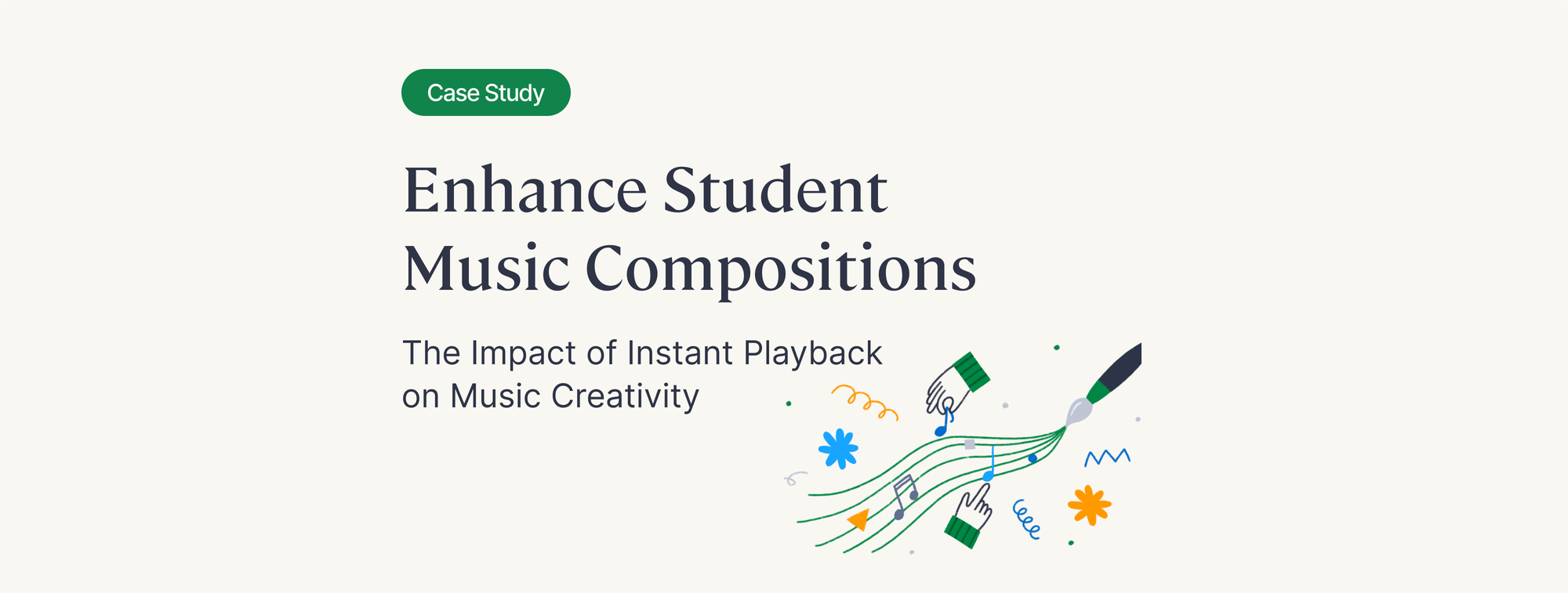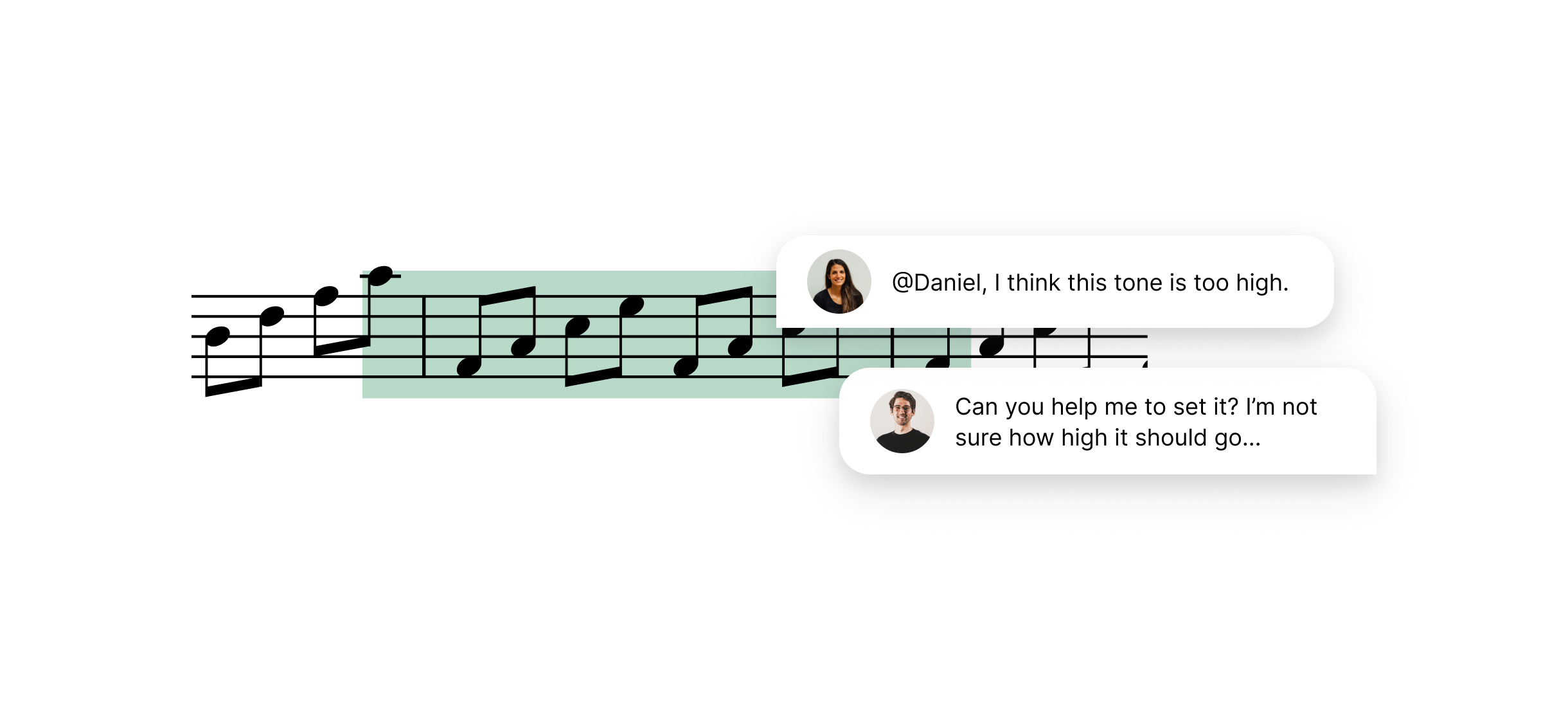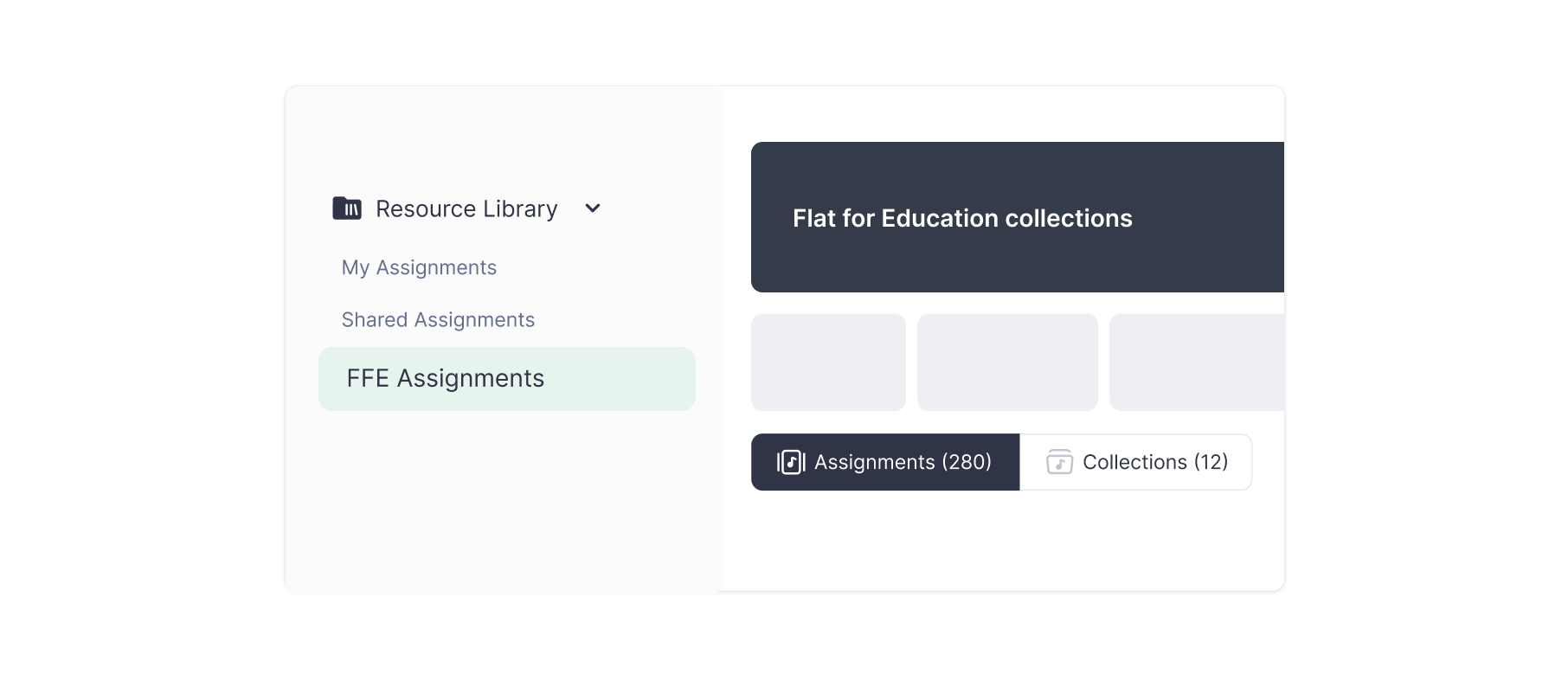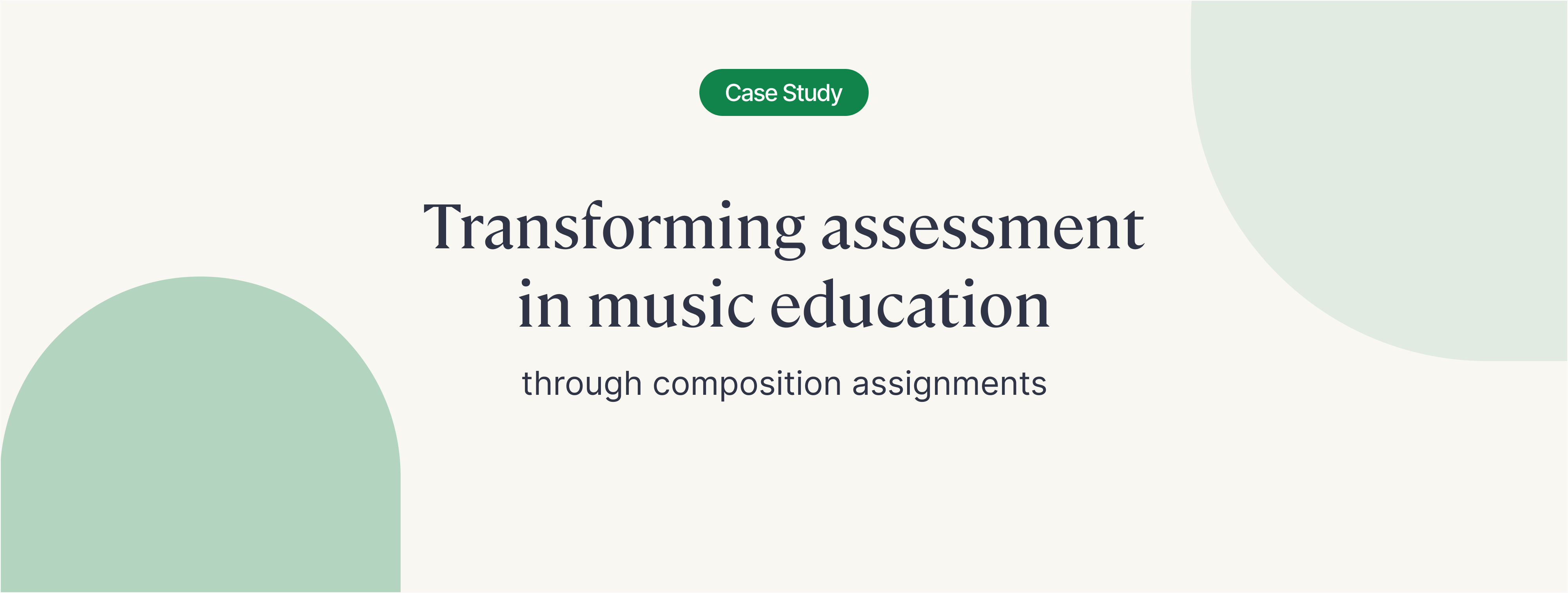The People’s Music School (TPMS) in Chicago recognizes the transformative power of music education. By integrating Flat for Education into their curriculum, TPMS leverages this innovative tool to not only teach music theory and performance but also to enhance students' musical creativity and expression through music composition. This approach helps students connect deeply with music, empowering them to explore and develop their musical ideas effectively.
Objective
The goal of incorporating Flat for Education at TPMS is to develop students' musicality, fostering an environment where they can grow as musicians and creators. This is achieved by enhancing their understanding of music theory, improving their compositional skills, and providing a platform for expressive musical exploration.
Approach: Enhancing Musicality Through Music Composition Assignments
Music composition isn't just a subject to be taught; it's a powerful teaching tool in music education. By using composition exercises, students can delve into music theory, learn how to play instruments, and understand musical notation more easily. Students don't need a lot of prior knowledge to start composing. In fact, composing can help them grasp complex musical theories in a practical way. Let's explore how this approach, along with using Flat for Education in this institution, has been a successful strategy for both teachers and students.
The importance of choosing an accessible and intutive platform
At The People’s Music School (TPMS), every student has access to Flat for Education. This ensures that all students, regardless of their background or home resources, have equal opportunities to explore music creatively. By making this tool universally accessible, TPMS promotes fairness and enables all students to continue developing their musical skills both during and after school hours.
Continued access to Flat for Education helps students at TPMS keep learning and growing in music beyond the classroom. Because they can use the platform from anywhere, students have the freedom to practice and experiment with music whenever they choose. This flexibility supports ongoing musical development and deepens their engagement with music, helping them to become lifelong learners and enthusiasts.
Flat for Education serves as an interactive learning platform that changes how students interact with music. Through the available playback feature in the editor, they can get instant feedback on their compositions, allowing them to listen to the effects of their musical choices right away. This immediate response is crucial for helping students understand how music works and see the results of their decisions in real time. Such hands-on experience is vital in making complex music theory understandable and applicable in practical settings.

Promoting Creativity, Individual Expression and Collaboration
Incorporating both individual and collaborative composition assignments in the curriculum offers significant benefits. Together, these approaches enrich the learning experience by developing both personal and interpersonal skills. The good news is that you can explore both using Flat for Education!
- Customized Composition Projects
Individual assignments empower students to express their unique creativity and deepen their connection with music.
- Collaboration Across the Curriculum
Through Flat's features, students engage in group projects where they can co-create music, critique each other’s work, and explore different musical styles. This promotes a deeper understanding of music and fosters a supportive community where creativity and social skills flourish.
When creating your composition assignments, you can assign them to individual students or to a group of students to work together. With the real-time collaboration option in Flat for Education, this process is smooth and enjoyable!

Learn all about this option in our dedicated guide:

Implementing Effective Musical Assessment Strategies
To effectively assess student progress in music, educators can adopt several strategic approaches. Here are three assessment strategies that can be implemented using the platform Flat for Education, which have proven to be successful at TPMS:
- Performance and Evaluation
On our platform, compositions serve dual purposes: they are both assignments and performance pieces. Students present their works in concerts and recitals, giving a real-world context to their creations. These performances are crucial for assessing students' understanding of musical elements and their ability to express emotion and narrative through music. You can use your students' compositions to create performance assignments that help them prepare for these recitals. Learn how to use this feature in our guide below.

Constructive Feedback Loop
Teachers at TPMS use Flat for Education to provide specific, actionable feedback on student compositions. This feedback is directly linked to the music scores, allowing for precise corrections and suggestions. Students can then revise their compositions based on this feedback, fostering a cycle of continuous improvement and deeper learning. You can provide this feedback directly in their composition assignments when reviewing them or by using inline comments.

Theory-Driven Exercises
Instructors at TPMS design targeted exercises within Flat for Education that compel students to apply music theory to their compositions. These exercises might involve tasks like harmonizing a melody, creating rhythmic variations, or exploring different musical forms and structures. This approach helps students directly integrate theory with practical application, reinforcing their overall musical education.
Remember, you can use the assignment instructions to provide all the required details for your students to successfully accomplish their tasks and attach additional resources they might need. Also, along with these composition assignments, you can use the Music Theory Worksheet assignments to support their understanding of music theory.

💡 Extra tip: If you are running out of inspiration for your assignments, take a look at our Flat for Education Assignments Library (FEE) in our Resource Library. There you will find many different pre-made assignments that you can adjust and use in just a few clicks!

If you want to learn more about our Resource Library, check out our dedicated article below:

Benefits of Using Composition to Teach and Assess Musicianship
From TPMS's experience with Flat for Education, we've identified several key benefits of their approach to music education:
✅ Music Literacy: Composition projects help students connect the music they see on the page with the music they hear, sing, and play. They develop lifelong skills in notating their own musical ideas and in playing or singing music written by others. Ultimately, this boosts their ability to interpret and perform music.
✅ Student Agency: Beyond just playing and interpreting existing music, students engage in creative processes such as brainstorming and editing right from the start of their studies. This gives them greater control over their musical expression.
✅ Diversification of Repertoire: Students are exposed to music created by their peers, which often reflects a greater diversity than traditional music publications. This exposure is especially empowering for students from backgrounds traditionally underrepresented in composition.
✅ Theory Appreciation: Students gain a deeper understanding of music creation and the reasons behind how music sounds, such as the differences in sound between a major scale and a minor scale or atonal music.
✅ Gateway to Improvisation: By learning composition, students acquire the skills necessary for improvisation and deeper interpretation of existing compositions.
✅ Alternative Assessment Methods: Composition projects provide an alternative way for students to demonstrate their knowledge and skills, particularly beneficial for those who may not excel in traditional testing. At The People’s Music School, students perform about 11% better on creative assessments like composition projects compared to traditional multiple-choice midterms.
Conclusion
The People’s Music School has greatly enhanced its music education program by using Flat for Education. This tool makes learning music theory accessible and encourages students to apply these concepts creatively in their compositions. As a result, students at TPMS develop strong musical skills, become more creative, and feel a personal connection to their music. By integrating our platform into the curriculum, the school supports its mission to develop skilled musicians who are also thoughtful and innovative creators in the world of music.
We hope this story inspires you to be the best music educator you can be and make the most out of Flat for Education to make your students fall in love with music!
Acknowledgements:
We sincerely thank Megan Robbins, Flat for Education user and music educator at TPMS, for her willingness to share her knowledge and expertise, which enabled us to create this use case.

